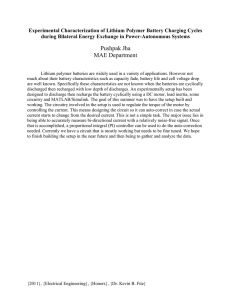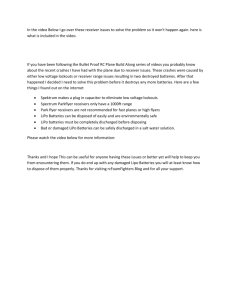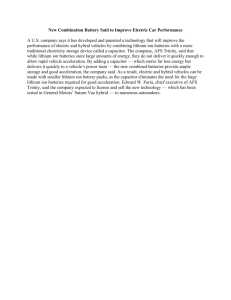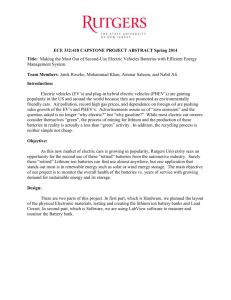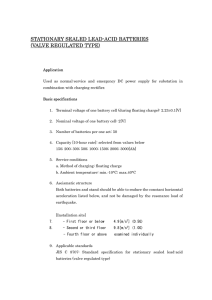Safety Alert - New Zealand Fire Service
advertisement
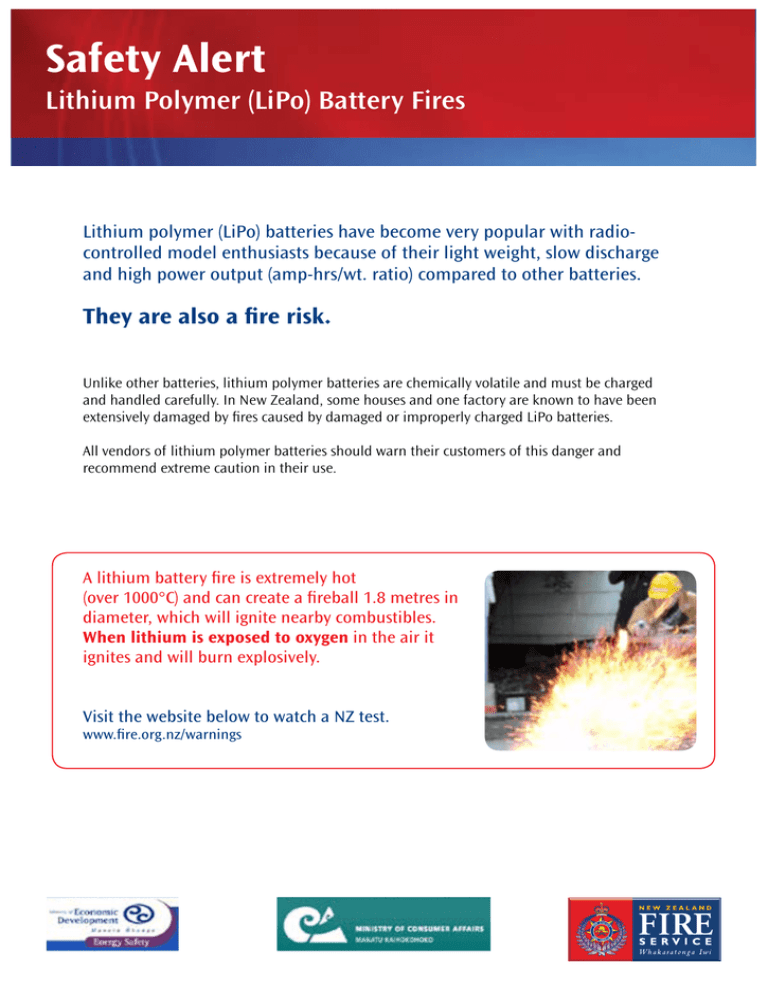
Safety Alert Lithium Polymer (LiPo) Battery Fires Lithium polymer (LiPo) batteries have become very popular with radiocontrolled model enthusiasts because of their light weight, slow discharge and high power output (amp-hrs/wt. ratio) compared to other batteries. They are also a fire risk. Unlike other batteries, lithium polymer batteries are chemically volatile and must be charged and handled carefully. In New Zealand, some houses and one factory are known to have been extensively damaged by fires caused by damaged or improperly charged LiPo batteries. All vendors of lithium polymer batteries should warn their customers of this danger and recommend extreme caution in their use. A lithium battery fire is extremely hot (over 1000°C) and can create a fireball 1.8 metres in diameter, which will ignite nearby combustibles. When lithium is exposed to oxygen in the air it ignites and will burn explosively. Visit the website below to watch a NZ test. www.fire.org.nz/warnings Lithium Polymer (LiPo) Battery Fires To manage the fire hazard associated with lithium polymer batteries it is strongly recommended that users note the following: Charging 1. Always charge LiPo batteries in non-combustible containers e.g. LiPo Sack - Never charge inside an automobile 2. Never leave LiPo batteries charging unattended or on charge overnight. Serious fires have resulted from this practice. 3. After any impact, always examine the battery for damage. Remove to a safe place for at least a half hour and observe. - Physically damaged cells can self-heat and may erupt into flame. 4. Never attempt to charge a cell with even slight physical damage. 5. Always use chargers designed for the lithium polymer batteries, Never use chargers designed for Ni-Cd or NiMH batteries. - Be absolutely sure that the Lithium Polymer charger settings are correct for the battery pack being charged. Fires have occurred using selectable/adjustable chargers improperly set. - Use charging systems that monitor and control the charge state of each cell in the pack. Unbalanced cells can result in fire 6. If the batteries show any sign of swelling, stop charging immediately and remove them to a safe place outdoors, as they could erupt into flames. 7. Keep a dry fire extinguisher or a large bucket of dry sand nearby. Water or CO2 may be ineffective in extinguishing LiPo battery fires. Handling Cautions • • • • • Always Store your Lipo batteries in non-combustible containers e.g. Lipo Sack Never store Lipo batteries in your model Never leave batteries inside a car on a hot day or any other place where temperature may exceed 60°C. Do not put the loose cells in a pocket, bag, drawer or on metal surfaces where they could short-circuit against other items, or where the battery tabs could be pressed against each other. If the electrolyte in the cells should get on your skin, thoroughly wash with soap and water. If in the eyes, rinse thoroughly with cool water. Immediately seek medical attention for this, or for burns. Disposal • • • If a battery is damaged and does not show any sign of self-heating, safely discharge the battery (using a resistor setup e.g. light bulb) to avoid a short circuit-induced fire after disposal. Dispose in regular rubbish. Never attempt to “heat up” your batteries or increase the voltage of a pack above 4.2V per cell. At 60°C, the pack can become unstable and very dangerous. Never “bump” the voltage of LiPo packs beyond the voltage set for lithium polymer packs on your lithium polymer battery charger. The manufacturers of lithium polymer batteries suggest a voltage range of 3V-4.2V. Increasing voltage beyond 4.2V per cell is not safe. The small increase in performance is not worth the risk of fire. Any fire not attended by the NZ Fire Service, please report online at: www.energysafety.govt.nz
